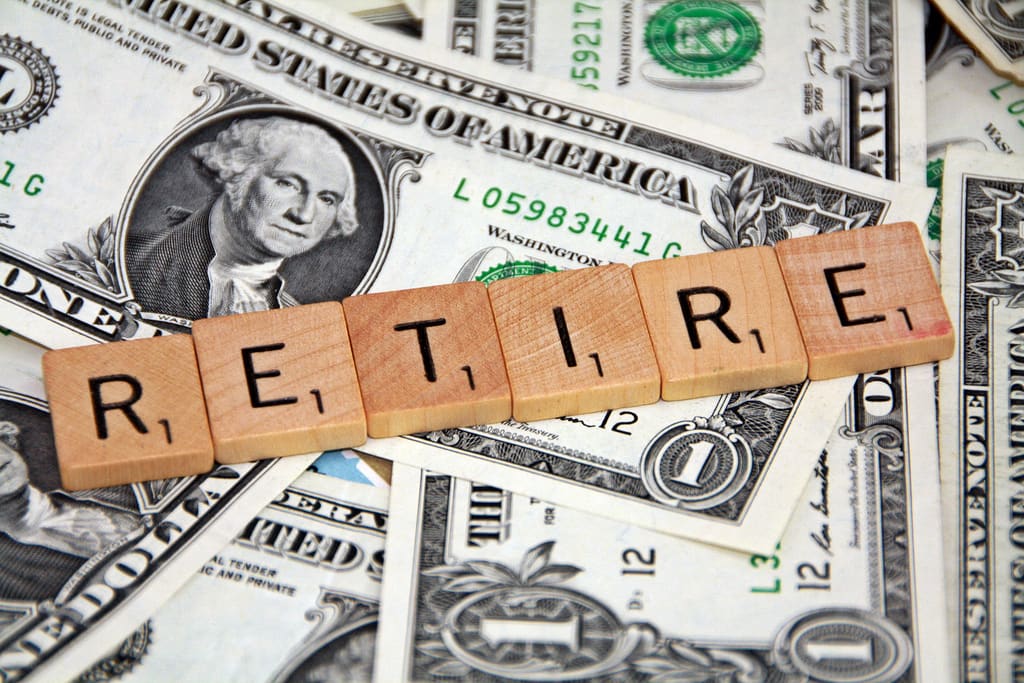
Imagine this, you graduate high school, go to college and pay off all four years of college by working a simple summer job. When you graduate you have enough money and credit to start a family, buy a home, car, and even a lake house. You work at the job for years, and they promise you a pension that will pay out a guaranteed amount during your retirement years. You retire, get a gold watch. And plan to travel the world on your pension and social security checks. The good old life right? Probably what some people think of when they talk about making America great again.
Except… the company goes bankrupt. The pension assets are frozen, because they need to be used to pay off creditors. And social security isn't really going as the government planned, because they kinda borrowed the funds, and there are a whole lot more people living longer than they were supposed to!
Maybe you should have done some saving on your own. That’s where an IRA comes into play.
Have you ever heard of anyone calling their retirement account an EYE-RA (IRA). It's pronounced by each letter: I.R.A. It stands for Individual Retirement Account. An IRA is the umbrella for the underlying investments. It's not an actual investment itself, it's a type of account. It's not the only type of retirement account, but the most common outside of a 401(k) nowadays.
There are a couple of unique factors to consider when thinking about starting an IRA, or rolling over an old employer-sponsored plan:
1. An IRA is actually tax deductible up to $6000 per year in 2019.
{In our video I said $5500; that was from 2018!} This can get confusing, because contributions to a 401(k) or 403(b) are typically taken out pre-tax, so you actually receive less money and pay less taxes. If you have an IRA, you make any contributions with your income or savings, and then receive a deduction on your taxes for that year.
You can put away up to $7000 if you're over 50. This $1000 allowance is called a catch-up provision to allow those who may not have saved as much to try to kick-start their savings plans.
All of the contributions are tax deferred, meaning that you'll be taxed on any growth later, when you receive distributions in retirement.
When you think about rolling over an old account, this is where some of our clients really get confused. A tax-free rollover is a 1035 exchange, and allows money to go from one tax-deferred retirement account to another with no penalties. So if you roll-over $25,000 that does not count against your $6000 contributions for the year.
2. There are limits for deducting as your income grows.
If you have a group plan like a 401(k), and are making contributions to an IRA, then you'll be phased out from deducting the contributions as your household income increases.
$64k-$73k per year is the phase out group for singles.
$103 - $121k per year is the phase out window for married people.
Let's say you were in a higher nominal tax bracket, and wanted to reduce your taxes. If you maxed out your 401(k) with $18,000 of contributions, and $6,000 into your IRA, this could move you down an entire bracket! The IRS figured that out, so they limit what is allowed or not each year with the income maxing out at some point.
Work with your accountant, because if one spouse stays at home the income limits go up to about $200,000.
If you make too much, you can still contribute up to $6000, non-deductible, and the money can grow tax deferred before taking the money out at retirement, taxable at that income rate.
3. ROTH Conversions and Required Minimum Distributions
A few other important call outs come to play with IRAs. First, you can do a non-deductible IRA conversion into a ROTH. You have to pay taxes today, but say that you can't contribute to a ROTH, because your income is too high, this would be a way to ensure you have some tax-free money at retirement.
The US government won't allow you to defer the taxes in an IRA forever. At the age of 70.5 you're required to take a Required Minimum Distribution (RMD). This percentage increases over time, essentially forcing an account holder to pay their taxes back into society. An efficient financial plan will account for IRA RMD's, and think about other tools like ROTH IRAs, Permanent Life Insurance, and traditional non-qualified brokerage accounts.
Hit us up if you'd like to discuss your old 401(k) or IRA!
About the Creator
Isaiah Goodman
Isaiah is a Certified Financial Education Professional TM and a dynamic speaker who loves to empower others. Isaiah has been married to his wife since 2012. At home they are joined by their four children and dog.






Comments
There are no comments for this story
Be the first to respond and start the conversation.